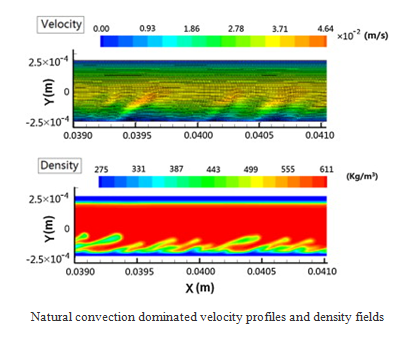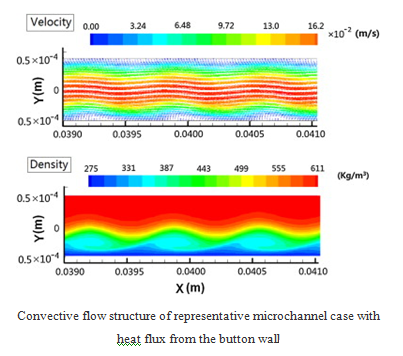Near-critical flow dynamics and heat transfer in microchannels
In recent years, near-critical fluids have been widely proposed in chemical extraction and synthesis, micro-manufacturing and also heat transfer apparatus, etc. Fluid near its liquid-vapor critical point is both dense and much expandable, and has been proved to have preferable performance in thermal and transportation systems.
A series of systematic investigations into the near-critical fluid convective flow and heat transfer inside microchannels are conducted. Precise interferometer visualization experimental systems are established to test the basic near-critical flow dynamics and heat transfer. New findings for near-critical fluids are found for the near-critical through-flows.
Numerical procedures and theoretical studies are carried out by modified Navier-Stocks equations, energy and state equations. The characteristics of such near-critical fluid configuration in microscales are systematically explored with sudden application of boundary heat fluxes.
It is found that strong near-critical vortex flows can be achieved in a relatively wide range of initial and controlling conditions in microchannels. Basic temperature collapse and the thermal-mechanical effects in unstable thin hot boundary layer are identified. In accordance with the temperature collapse, local heat transfer enhancement is found. Further discussions on the dynamic feature of near-critical flows show that such flows can sustain very high micro-mixing with only a small energy dissipation.
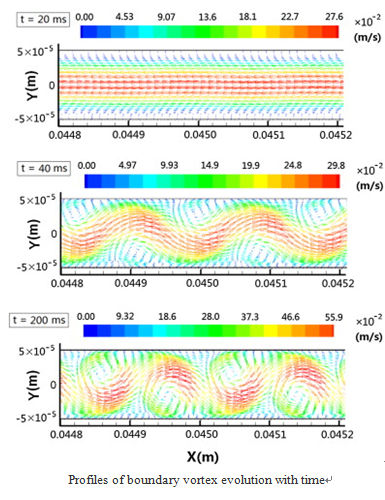
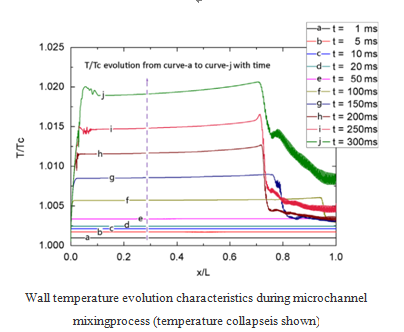
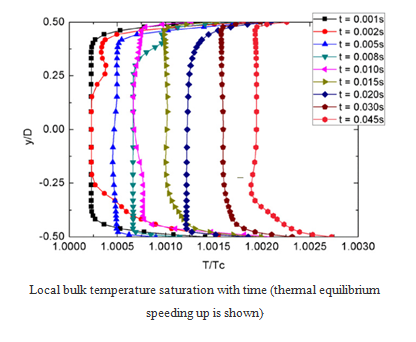
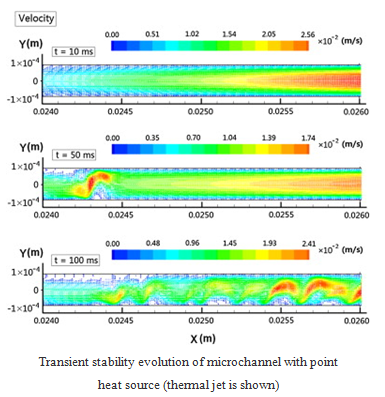
Transitions from vortex mixing flow to buoyancy convections are found during the microchannel spatial scaling. Theoretical analysis shows that the basic Kelvin-Helmholtz instability applies to the current microchannel instability evolution. The specific boundary thermal-mechanical perturbation process serves as the origin of current instability phenomena.
